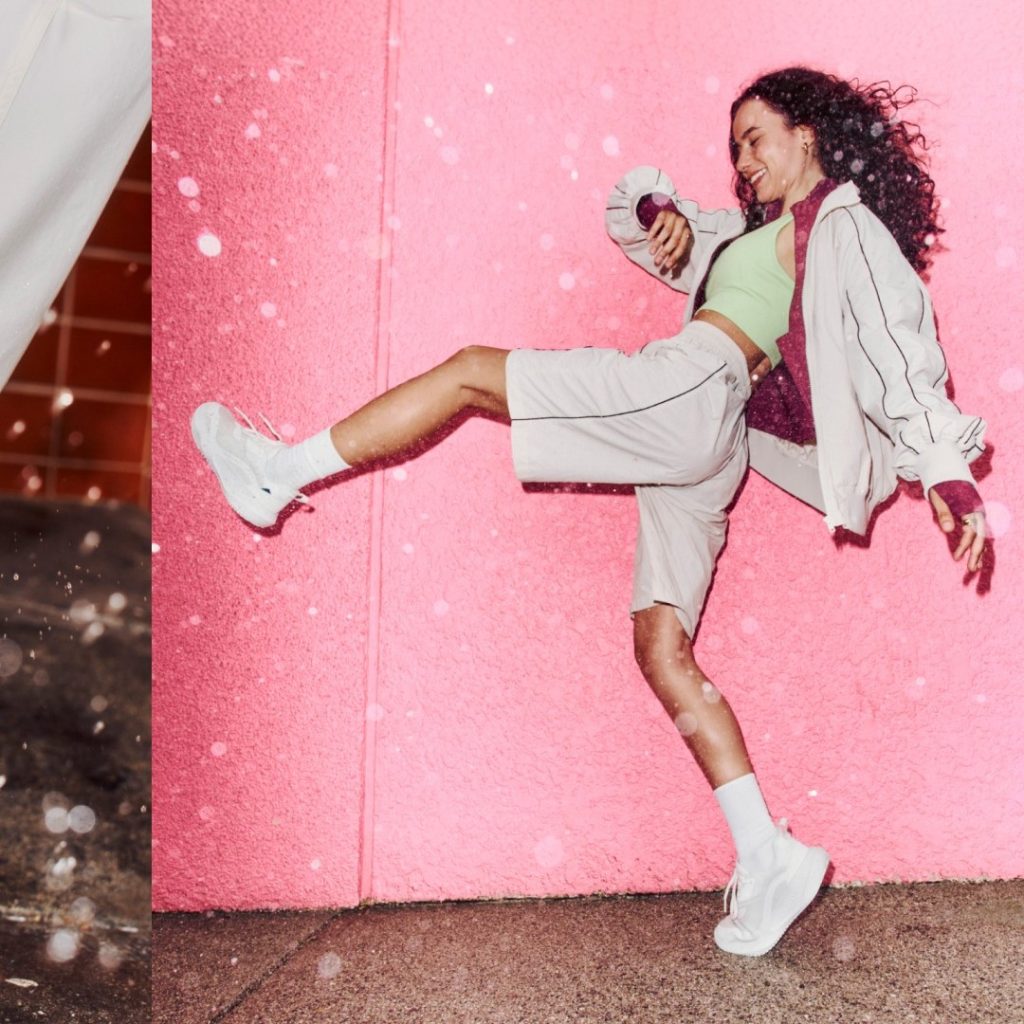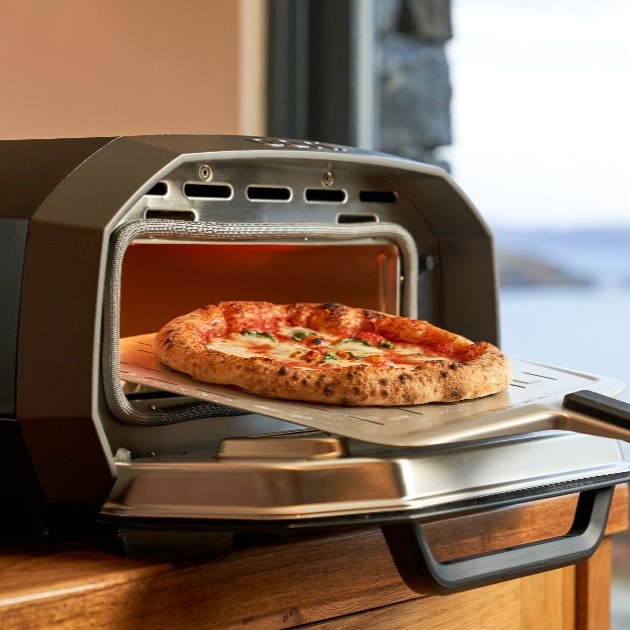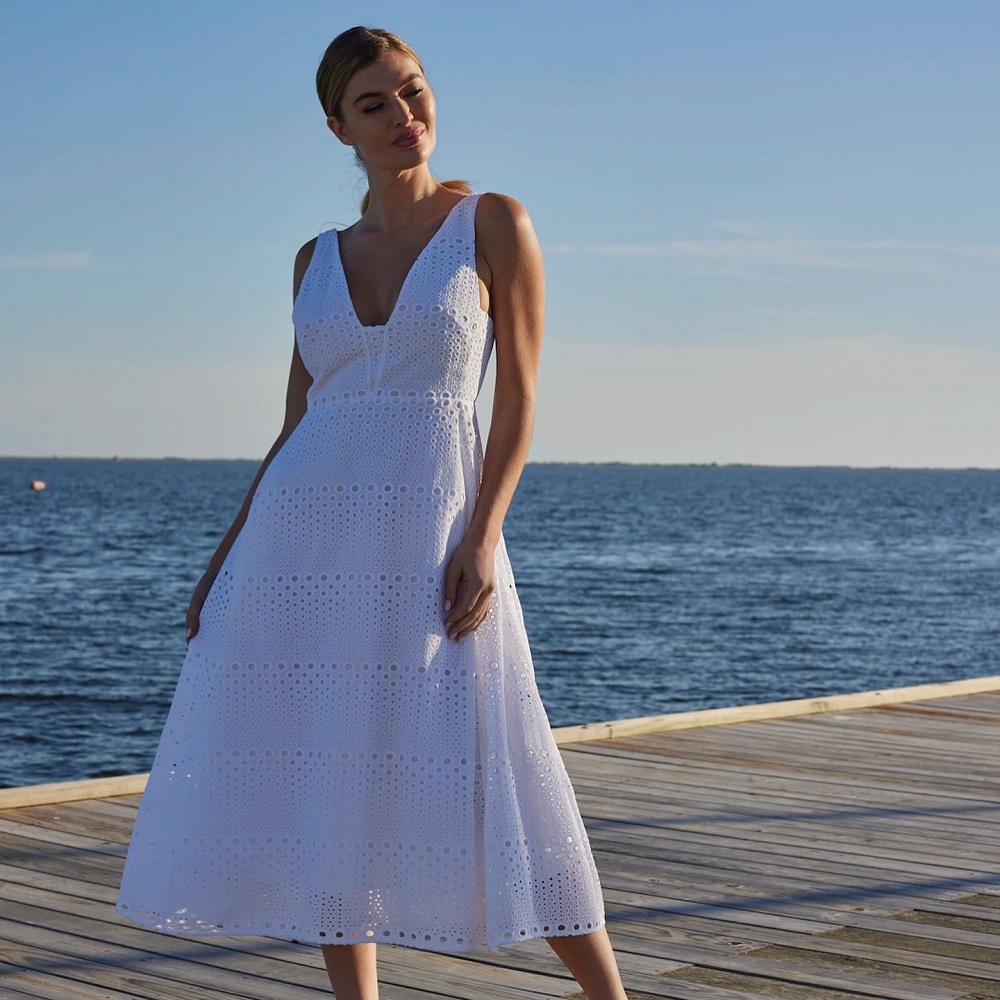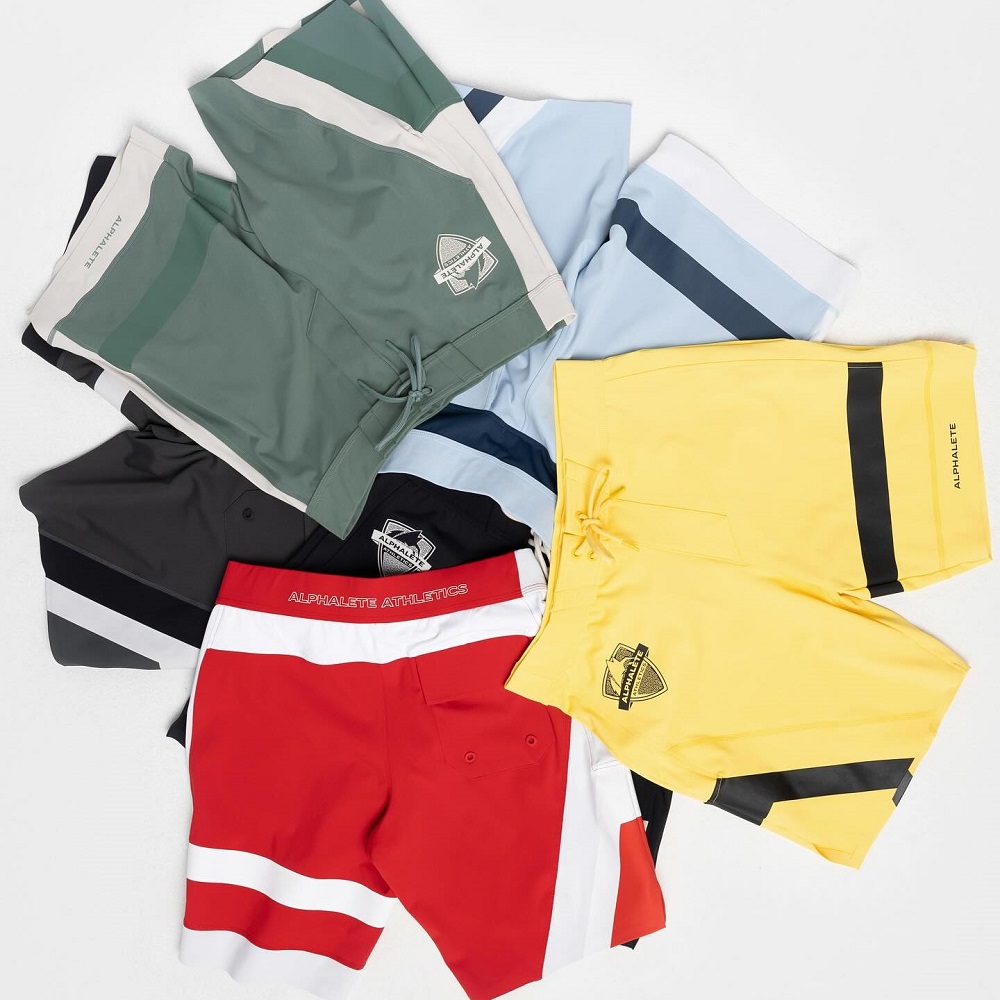Low Cut vs No Show Socks – Best Guide For 2023
Table of Contents
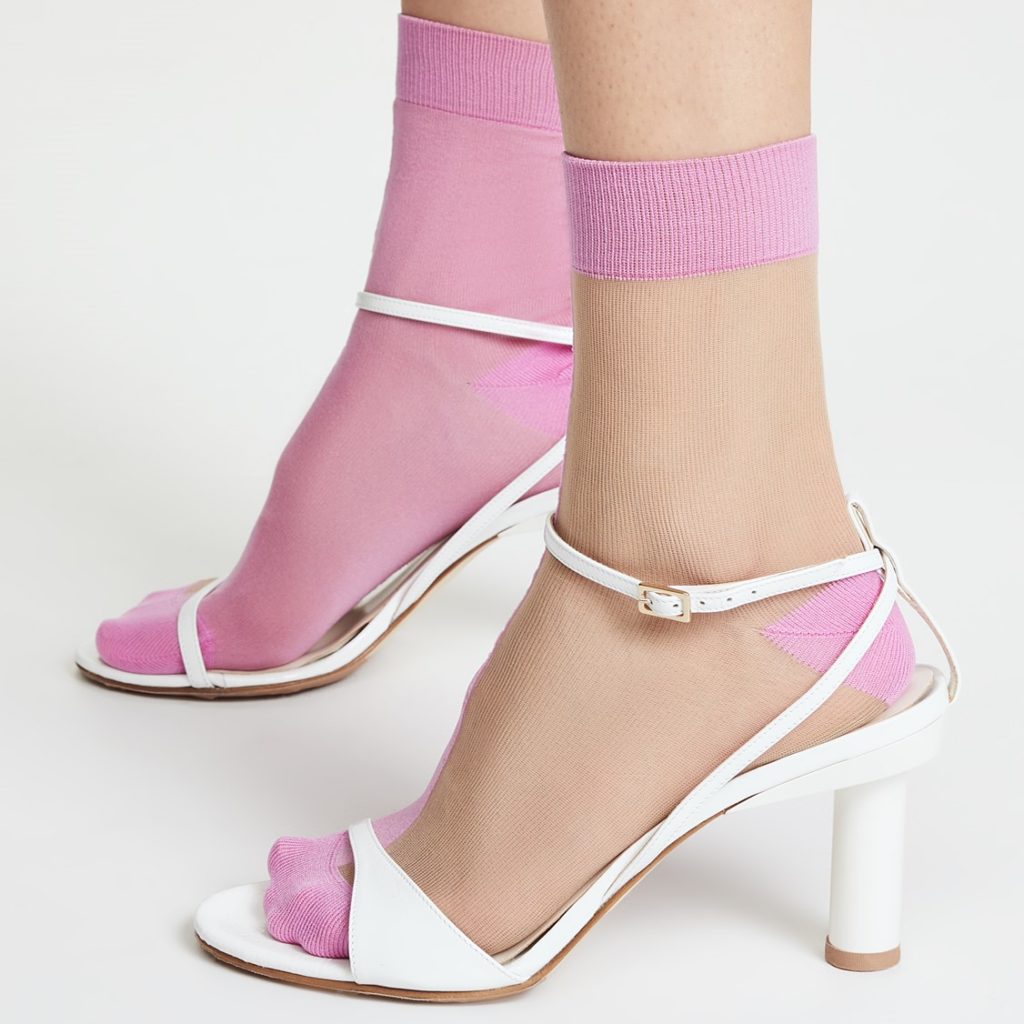
It’s strange how low cut vs no show socks kick around right and left in my room and I never gave a second thought on the fact that different types of socks exist, each fulfilling a different purpose. To keep in mind, there are five kinds of socks that should be on your radar, among other less common types:
- No show socks are designed to be invisible under shoes, reaching partway up the foot
- Low cut socks are minimally visible under the shoe, hitting below the ankle bone
- Quarter length socks rise above the shoe and typically cover the ankle bone
- Ankle socks are a few inches shorter than quarter length and also cover the ankle bone
- Crew length is one of the most common and popular sock types, reaching mid-calf level
Here I was indulging in low cut vs no show socks, thinking they’re the only pairs I need in life. I was wrong to assume—I mean, are they even posh-looking? Or capable of withstanding the winter chill? What happens if I feel like jogging through one of those winding nature trails and fail to protect my upper legs?
This led me to hunt down socks that will guarantee satisfaction for my feet and shoes. Socks doesn’t have to be boring, so to liven up this chat, I’ve arranged these ‘fighting matches’ to take place in this article:
- Quarter vs crew socks
- Crew vs ankle socks
- Low cut vs ankle socks
- Ankle vs no show socks
- Low cut vs no show socks
The ultimate challenge comes down to low cut vs no show socks since their names are mistakenly used interchangeably, so their distinction from one another must be made certain once and for all. Let the games begin.
First Match: Quarter Socks vs Crew Socks
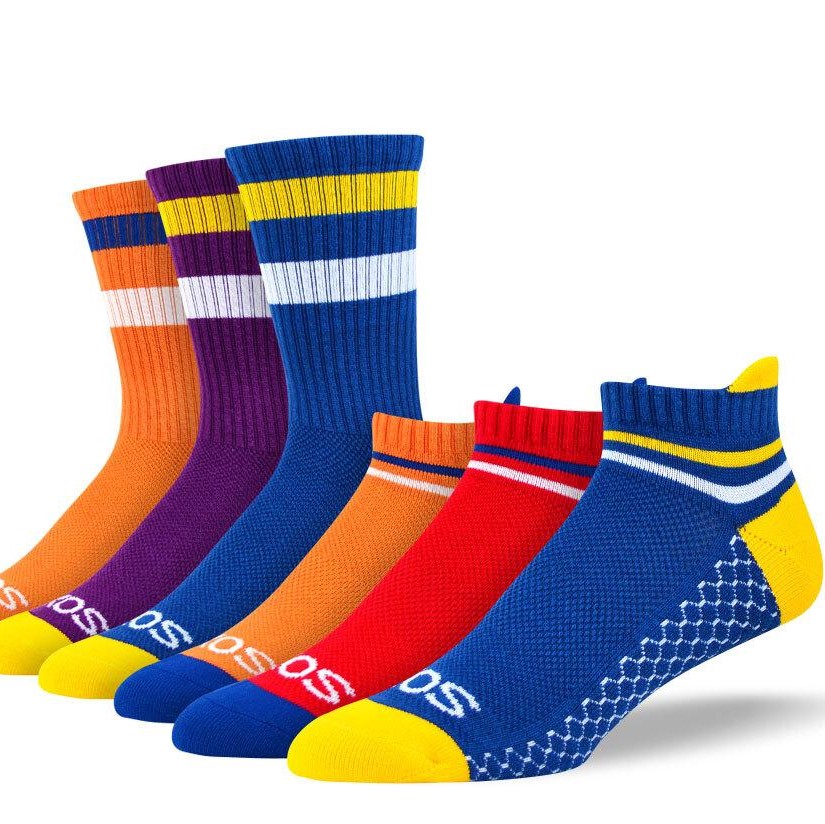
Begin!
To recap, the quarter socks enter with a rise from the shoe line to cover the ankle bone entirely. They manage to prevent heel blisters and protect the back of your feet from shoe bites.
Hold on a second though. The crew socks counterattack by rising 6-8 inches above the shoe line. It’s an incredible feat compared to the smaller size that the quarter socks were offering. The crew socks don’t stop there… Their added lower leg protection allows the wearer to bear cooler temperatures and avoid scratches from rocks and bushes when running past them during hiking trips. They’re a popular length for hiking socks that are usually made out of wool, keeping you nice and toasty.
Even dust doesn’t stand a chance against the crew socks as they stretch up to the calf muscles and are ideal for informal purposes such as running and lounging at home during winters. The crew socks are comfortable enough to have you nestled in a weighted blanket with some hot cocoa by the fireplace while binge watching your favourite show on Netflix, Amazon Prime, Crave, and so on.
Outside of the home, the crew socks are practically made ankle and medium length boots. They make for an attractive pairing with running shoes at the gym and can protect your legs while deadlifting. Alas, the quarter socks throw in a surprise attack by being able to complement the same footwear apparel if you’re in favor of less visibility.
Winner: Quarter Socks
Second Match: Quarter Socks vs Ankle Socks
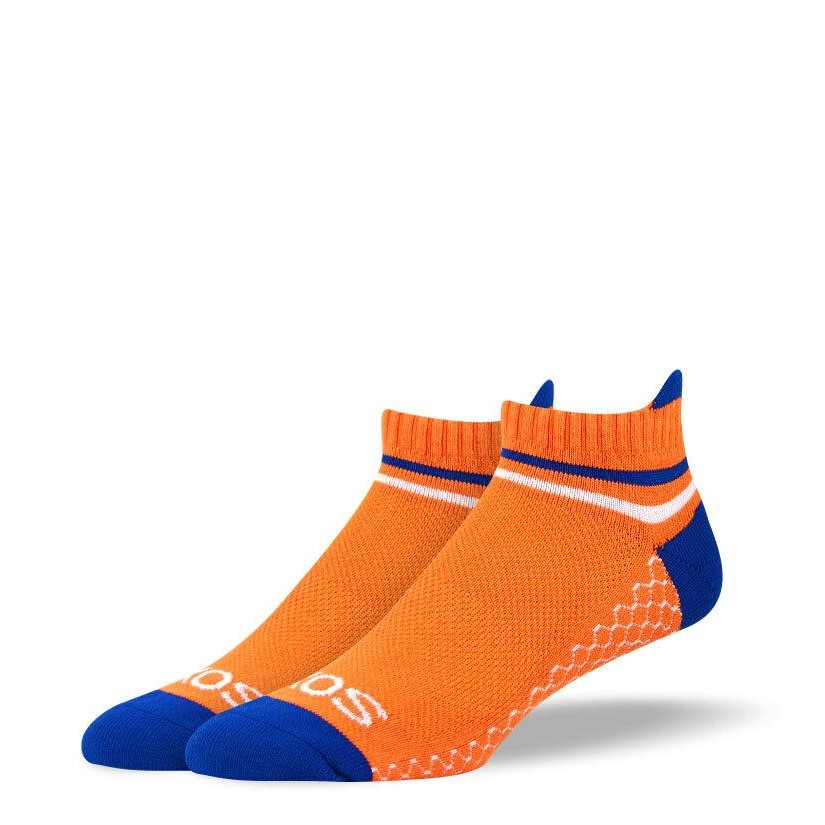
The quarter socks move on to their next competitor, ankle socks, to determine which provides the most for many people. The quarter socks serve men well by giving their suit or any other professional attire a nice touch. They go the extra mile by serving women with socks that have a dual functionality in work and play, pairing particularly well with skirts and loafers.
The quarter socks, however, seem to have lost their footing as the ankle socks dominate them by popular demand since they’re perfect for all casual occasions. The ankle socks are sophisticated yet playful and suitable for a first date, more so than the quarter socks by a landslide. Ankle length is also a popular choice for athletic socks, as keep your feet and legs cool. We’ve now come to a conclusion:
Winner: Ankle Socks
Third Match: Low Cut Socks Vs Ankle Socks

Before seeing the low cut vs no show socks go head to head, the ankle socks are going to the big leagues first and their opponent appears to be an easy target. As the ankle socks charge towards the low cut socks, knowing that they provide more coverage, they’re stunned by the low cut’s durability for running. The low cut socks’s rise above the shoe’s heel collar then stopping in the centre of the ankle bone is not to be overlooked, but admired.
The low cut socks are designed for athletes who want to avoid the hassle of socks slipping too low in their sport shoes. It is no wonder why the low cut socks are also titled, “ped socks” as they stomp the ankle socks into the dirt, mercilessly. It is time for the verdict:
Winner: Low Cut Socks
Fourth Match: Ankle Socks vs No Show Socks
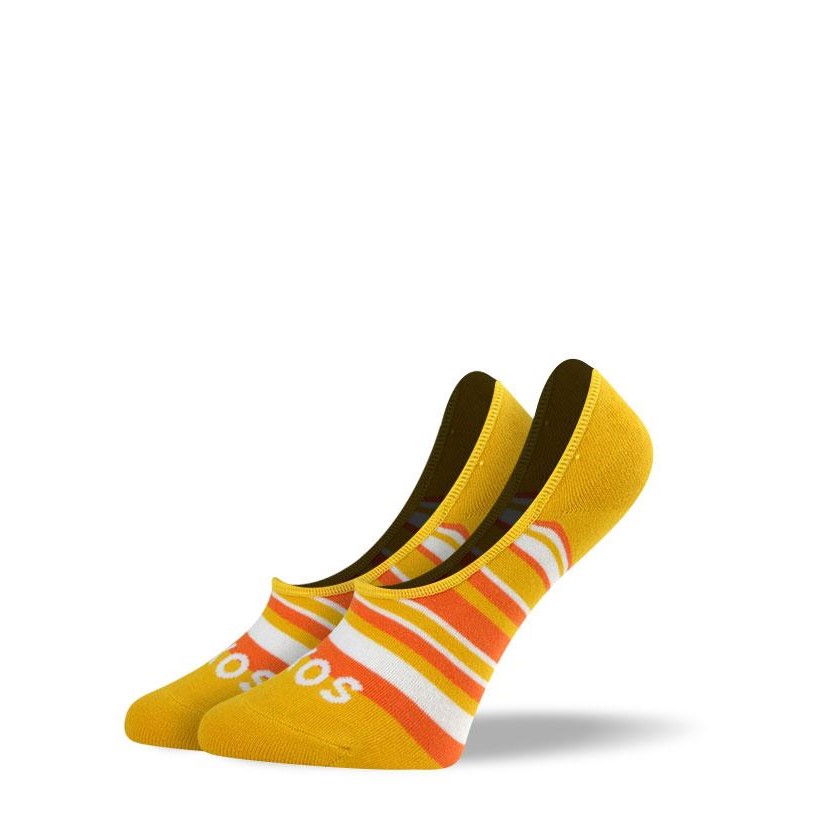
The low cut vs no show socks is well underway, but the ankle socks are back at it again and they absolutely refuse to be dethroned. The low cut socks may have swamped them, but they’re persistent in believing that defeating the no show socks will be swift and victorious. The no show socks begin the battle by offering little or no sock appearance above the heel collar of the shoe. From the outsider’s perspective, it looks like the wearer is going barefoot in shoes.
The no show socks tiptoe with their thin, ballerina slipper-like form and make themselves invisible to the ankle socks and others. In fact, the origin of “sock” comes from the Latin term “soccus,” meaning “light shoe” or “slipper” and best describes the no show socks themselves. By acting as slip-on paddings, the no show socks have the ability to protect your feet from smelling as well as from blisters. No show socks are a solid choice to wear with boat shoes for this reason.
In turn, they protect shoes from blood and sweat stains, altogether preventing germs from ruining your day. As a final move, the no show socks knock out the ankle socks with some of their dot patterned soles that enables them to grip on the floor and pin their opponent down for the three-second count:
- The ankle socks struggle to overcome the no show socks’ power, seeing that no show socks pair fabulously with loafers since those are low cut and any other sock length might come off as awkward.
- The ankle socks realize that some people, like Albert Einstein, don’t like wearing socks at all. Someone is always bound to complain about itchiness or feeling uncomfortable.
- The ankle socks stop resisting and let the no show socks breathe on.
Who’s trekking towards the final match?
Winner: No Show Socks
Fifth and Final Match: Low Cut vs No Show Socks

It’s the battle you’ve long awaited for: low cut vs no show socks. The low cut socks provide minimal visibility as they aim to double cross the no show socks. The no show socks hit below the ankle bone, it’s a brutal attack since the low cut socks fail to cover such a sensitive area. Yet the low cut socks are quick to retaliate in the same spot as the no show socks did, it’s super effective.
The low cut vs no show socks pair nicely with sneakers or loafers but are not ideal for overly dirty or grimy outdoor activities. For the low cut socks, the hemline is outside of the shoe and its position is given away as others are able to see them. The no show socks are a blessing in disguise as they attempt to comfort sensitive feet while in hiding.
| Men’s No Show Socks | Women’s No Show Socks |
| Crisp, clean image of power and charm while wearing, say, Gucci loafers for outings such as a job interview. | Hold true value in maintaining a posh and cutesy appearance like the our ancestors who wore socks as a status symbol. |
The low cut socks are indeed one level above no show socks and they use this knowledge to their advantage. To remain relevant, athletes are often the main consumers keeping low cut socks in the market. The low cut socks absorb sweat and simultaneously keep the wearer warm. The no show socks are no help during the winter season as the person’s bare skin is exposed to the cold and they forcibly regret their choice in socks. During the summer season though, the no show socks are a gift and meant to soak up any moisture as you soak up the sun’s rays.
The low cut vs no show socks have their strong similarities, and one’s weakness is made up with another’s strength. They’re equally doable and reliable to win the attention of many. Depending on the climate and the wearer’s personal preference, the low cut vs no show socks are here to stay and balance each other out. So, without further ado, let’s check out the scoreboard:
It’s a Tie!
It’s a tie game between low cut vs no show socks. What have we learned today?
- The ankle socks are stubborn and ‘in your face’ every time you attempt to do laundry. They’re always readily available.
- The quarter socks know how to put on a good fight. They’re practical and professional, all-around useful and most likely all over an individual’s bedroom.
- The low cut vs no show socks both deserve a space in your home. One cannot go on surviving without the other taking its place. They support one another in their endeavors to endure the passing seasons with levelled success for the greater good and for the greater you.
Other Types of Socks
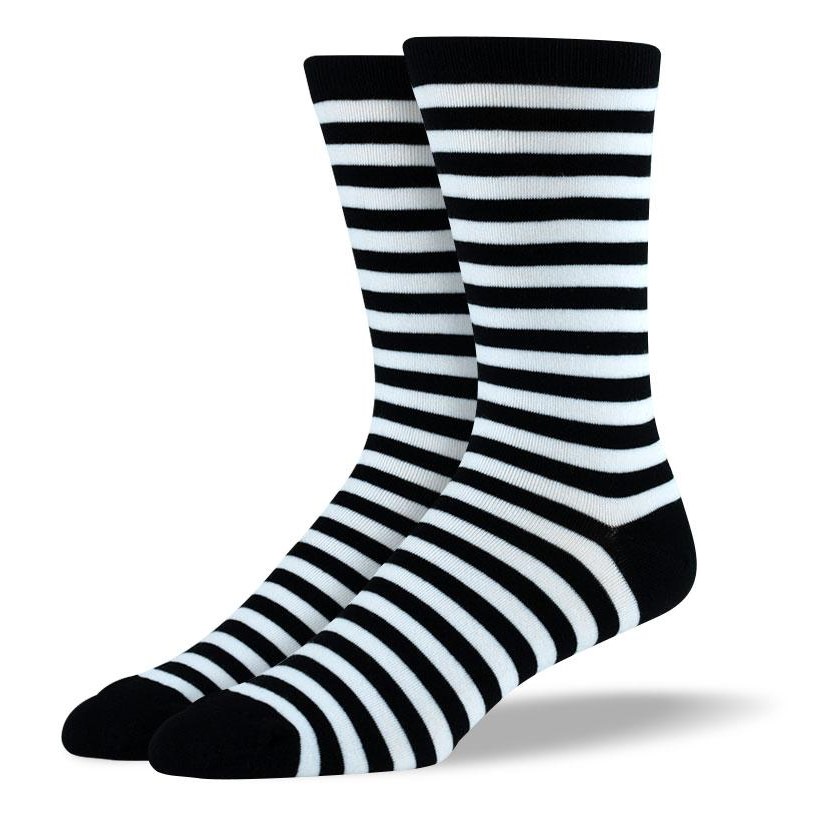
Read on for more sock options to get the full story on lengths and types:
Mid-Calf Socks
Compared to crew length socks, mid-calf or trouser socks sit perfectly in the curve of your calf so they won’t fall down your leg during the day. Many dress socks come in mid-calf length. Since they sit tightly around your upper calf, it makes for clean and smooth lines from the knee down to the foot.
Knee High Socks
Knee high socks, or over the calf, reach just where you’d expect, a few inches below the knee. They’re typically worn by women who pair knee high socks with skirts, shorts, dresses, heels and boots. For men, they’re great to wear under any bottoms for an extra layer of warmth and comfort. Knee length socks generally feature stay-up technology to prevent them from rolling down.
Thigh High Socks
Also known as over-the-knee socks or O.T.K., this length is paired with skirts, shorts, dresses or longer tops. This is one of the longer types of socks that are a suitable alternative to wear during the colder months, since they cover much of the leg. Expect the elastic around the cuff to be tight since it’s working to hold up more material.
| Sock Length | Ideal For |
| Mid-Calf | Pairing with dress shoes Covering skin on the leg with dress pants that ride upWearing with certain casual shoes for a smart casual outfit |
| Knee High | Wearing with boots and pants in the winter for extra warmthPairing with skirts and dresses in the fall and winter to switch up your outfit and for added warmth |
| Thigh High | Can be worn instead of tights A perfect thick sock option with skirts and dresses in the fall and winter |
Casual Socks
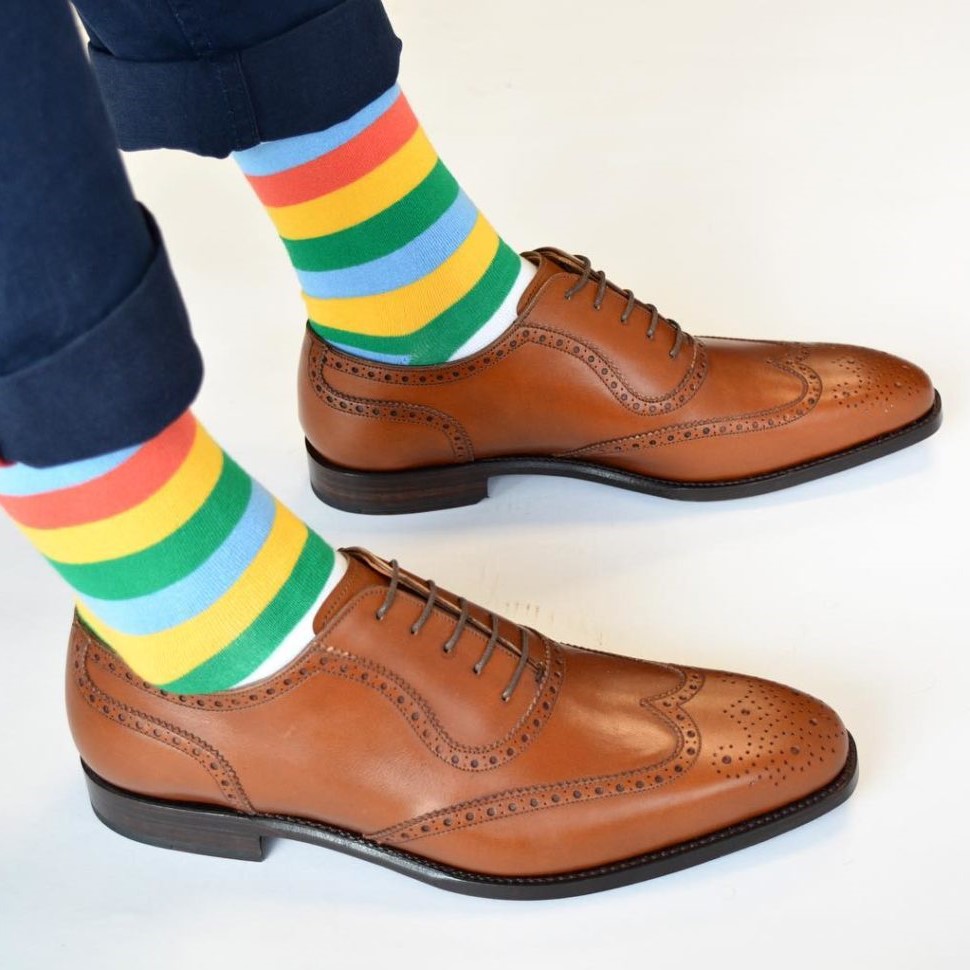
Casual socks are designed to be worn on a regular day. Socks are all the rage now and you can get pretty much anything you want on them, even your pet. Do a quick search online and a sea of colours, patterns, styles and lengths will be at your disposal with casual socks. Since there is a wide selection for casual socks, they come in just about any length. Standard cuts for casual socks are ankle, crew, calf length, knee high, and over the knee.
Dress Socks
Dress socks, as the name implies, are designed for wearing with dress shoes and formal attire. You can also wear them in more laid back settings, where dress socks can elevate your casual outfit. You can go for subtle sophistication with neutral dress socks, or you can choose colors and patterns to add flair to a basic business casual look.
The ideal length for dress socks has fluctuated throughout the years, dating all the way back to when exposed skin was seen to be scandalous. A good dress sock usually comes in mid-calf length, while knee high is offered if you want more coverage or comfortability. You should never wear a dress sock that is below the calf. The shorter you go, the more you put yourself at risk for bare skin to show.
Athletic Socks
Athletes require socks that will support them at their peak performance. Foot problems that commonly affect athletes, like joint irritation and athlete’s foot, could be caused by wearing the wrong types of socks. Athletic socks act as a cushion for the feet to prevent irritation and work to repel extra force the body creates when it’s jumping, running and bouncing around. These socks are designed with moisture-wicking capabilities, so that moisture can be trapped and transferred, leaving the feet dry. Athletic socks come in a variety of lengths based on activity requirements.
Compression Socks
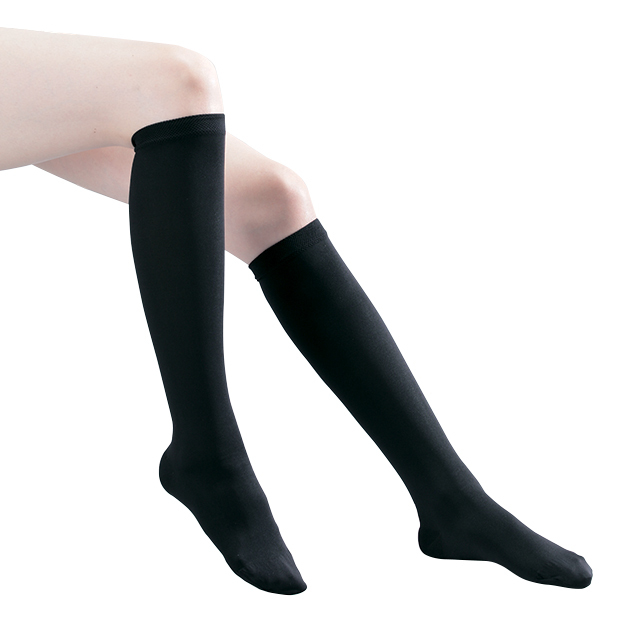
Compression socks are in a special category, distinct from the types of socks we’ve looked at so far. Compression socks are built to addresses issues with circulation. They place targeted pressure to help push blood and fluid out of your legs, enhancing circulation by creating a pressure gradient. They fit tightly around your ankle, gradually decreasing in pressure toward the top.
Compression socks are recommended for people who spend prolonged periods of time sitting or standing, which causes blood to pool in the legs. They also assist in post-exercise recovery and in treating mild to severe venous issues. Compression socks are commonly available in knee high and thigh high lengths. Refer to our full guide on compression socks for details.
Now that you’re well-versed on sock types and how they compare to each other, you’ll know how to choose pairs to go with your outfits. Next time you go sock shopping, you’ll know exactly which kinds you’re looking for. Knowledge is power, after all, even when it comes to socks!



